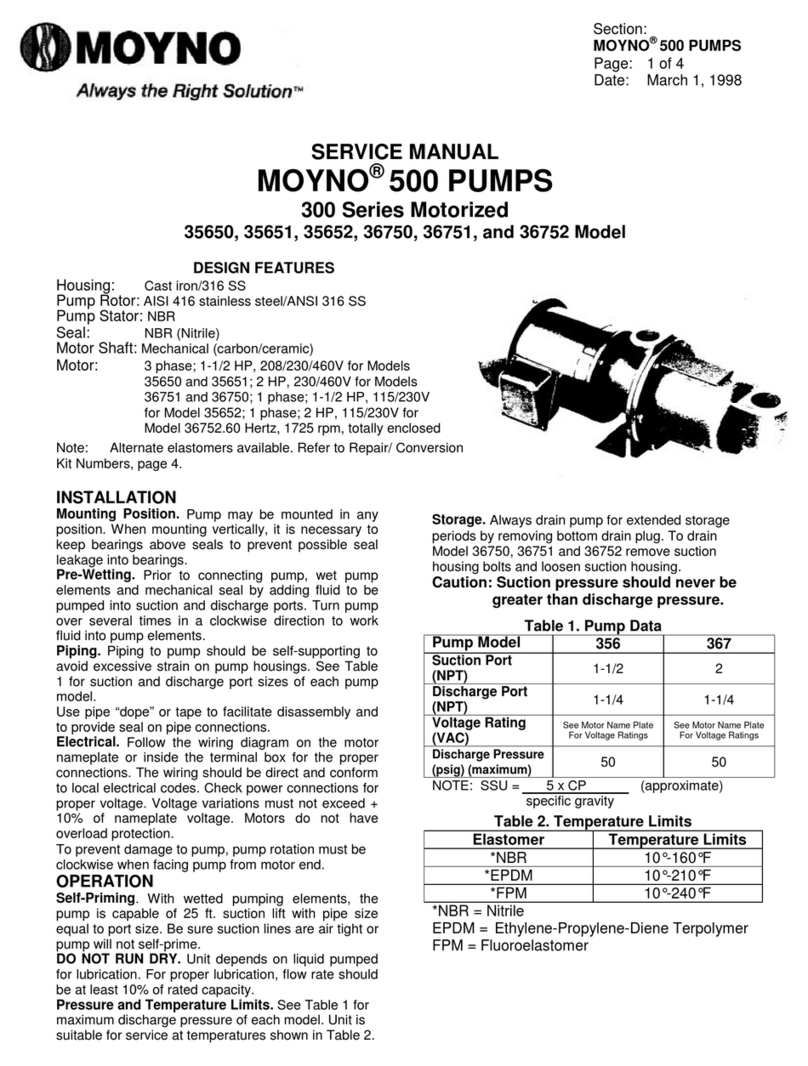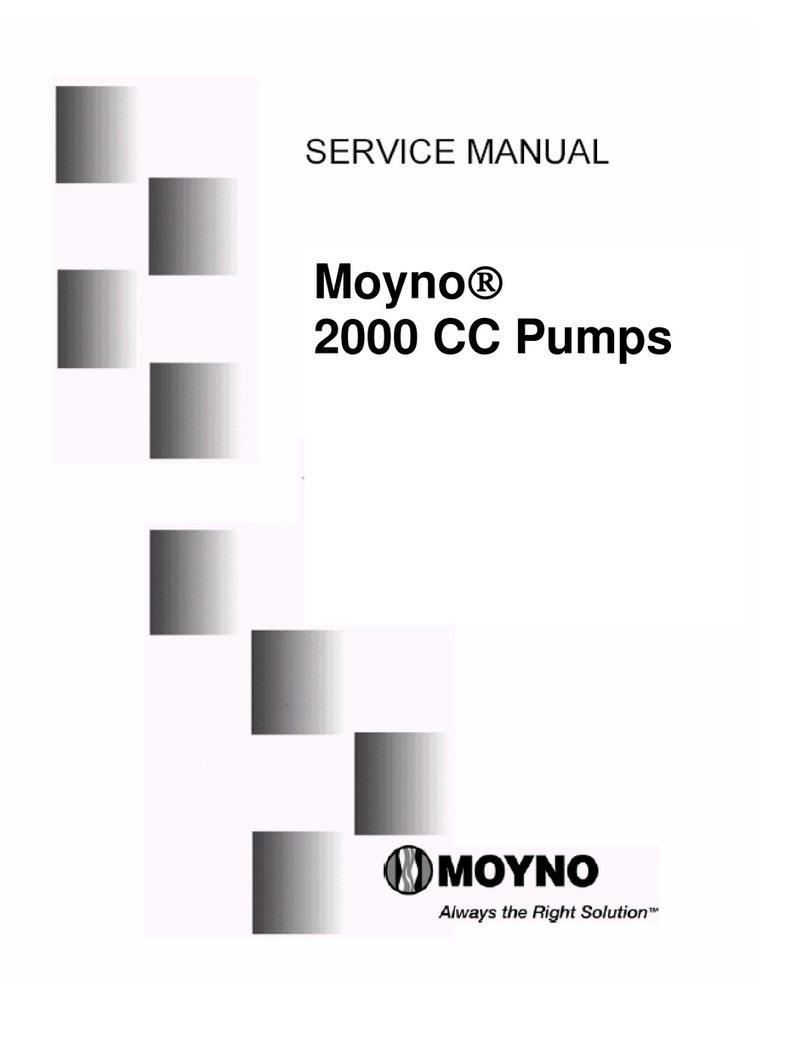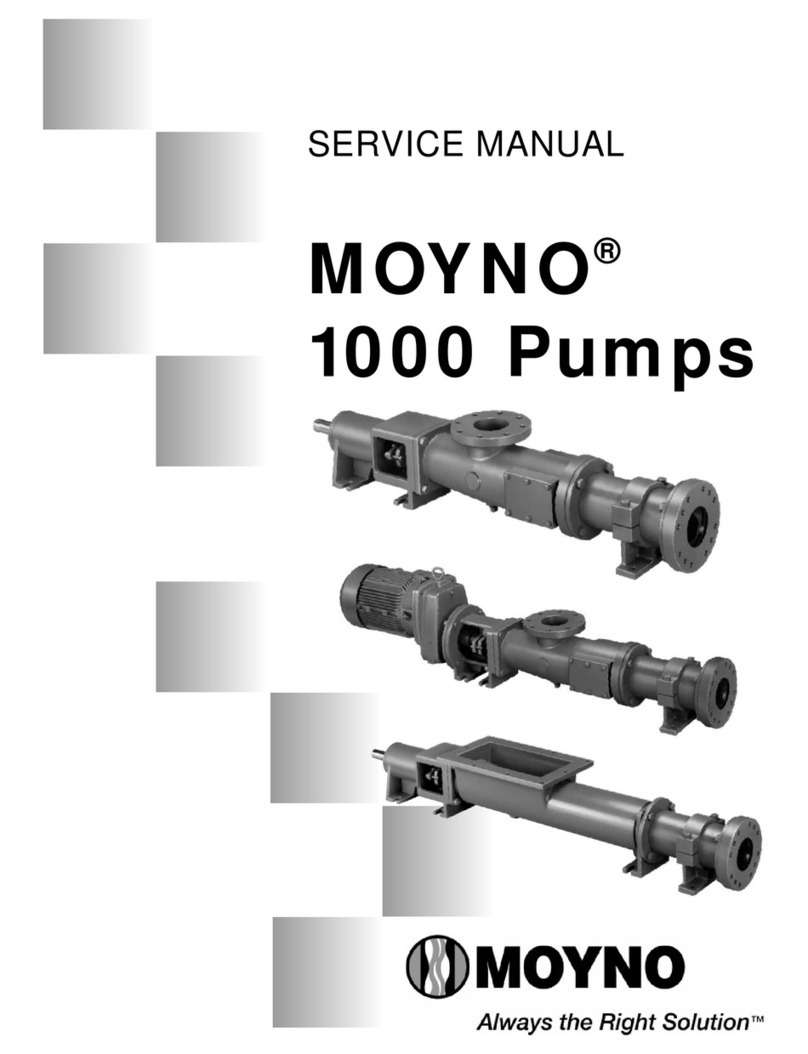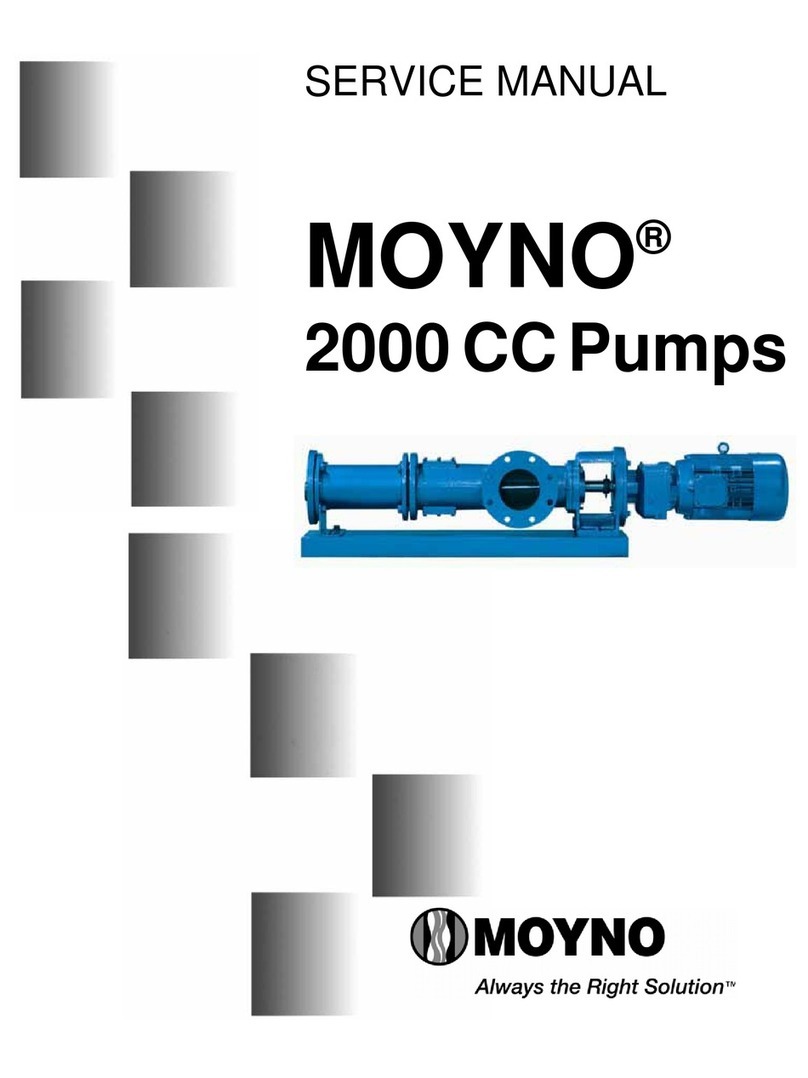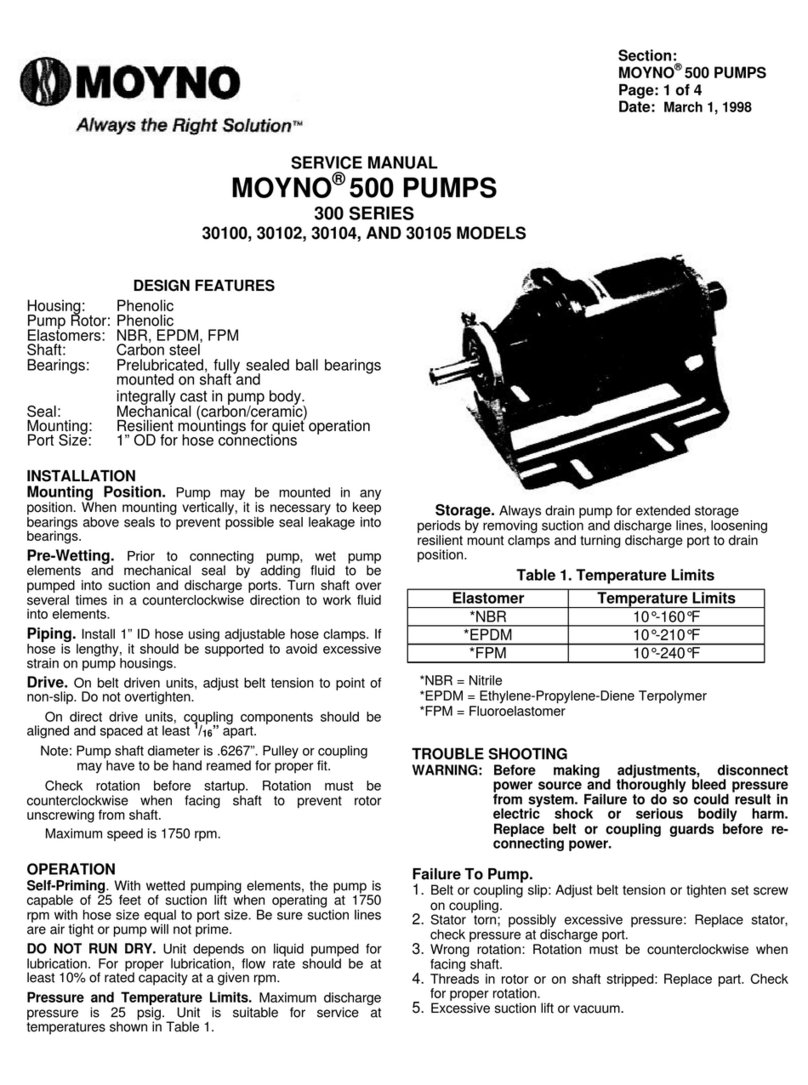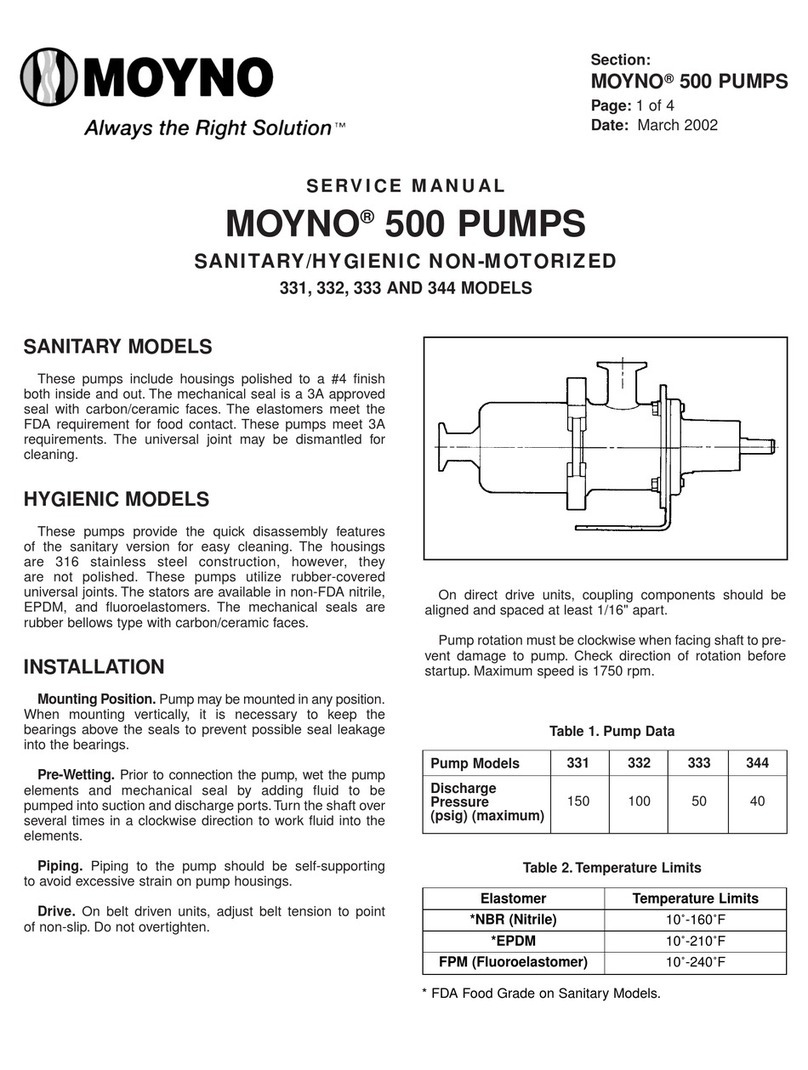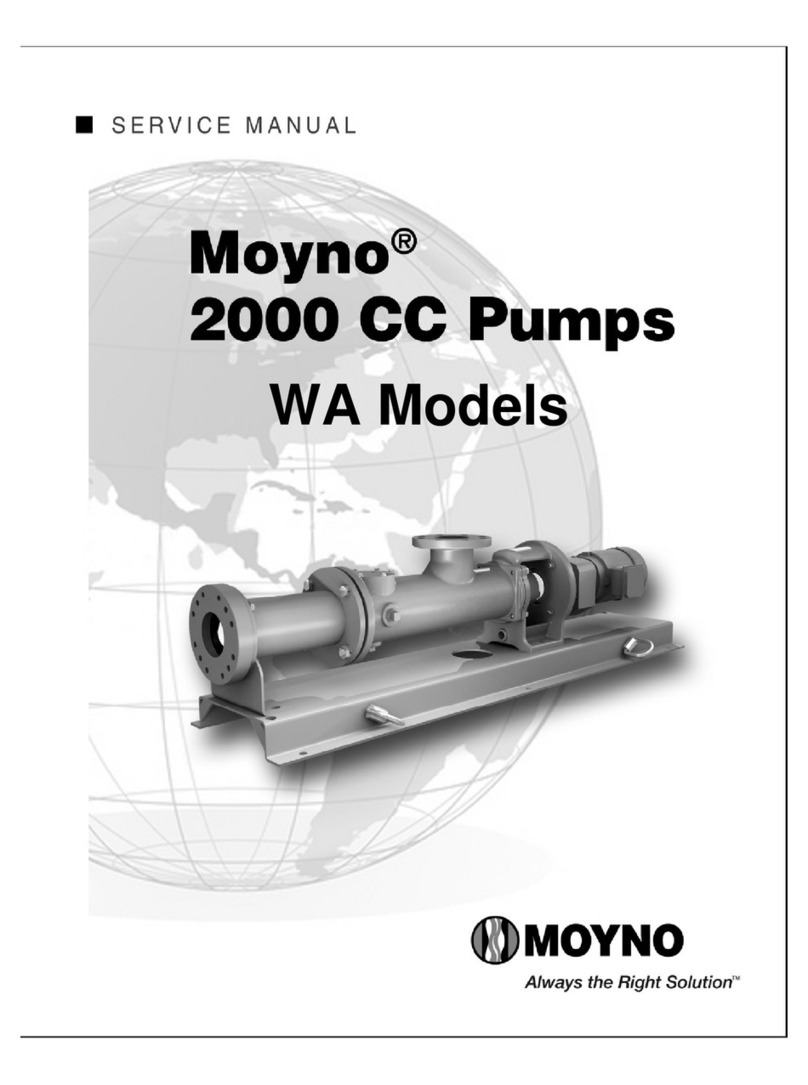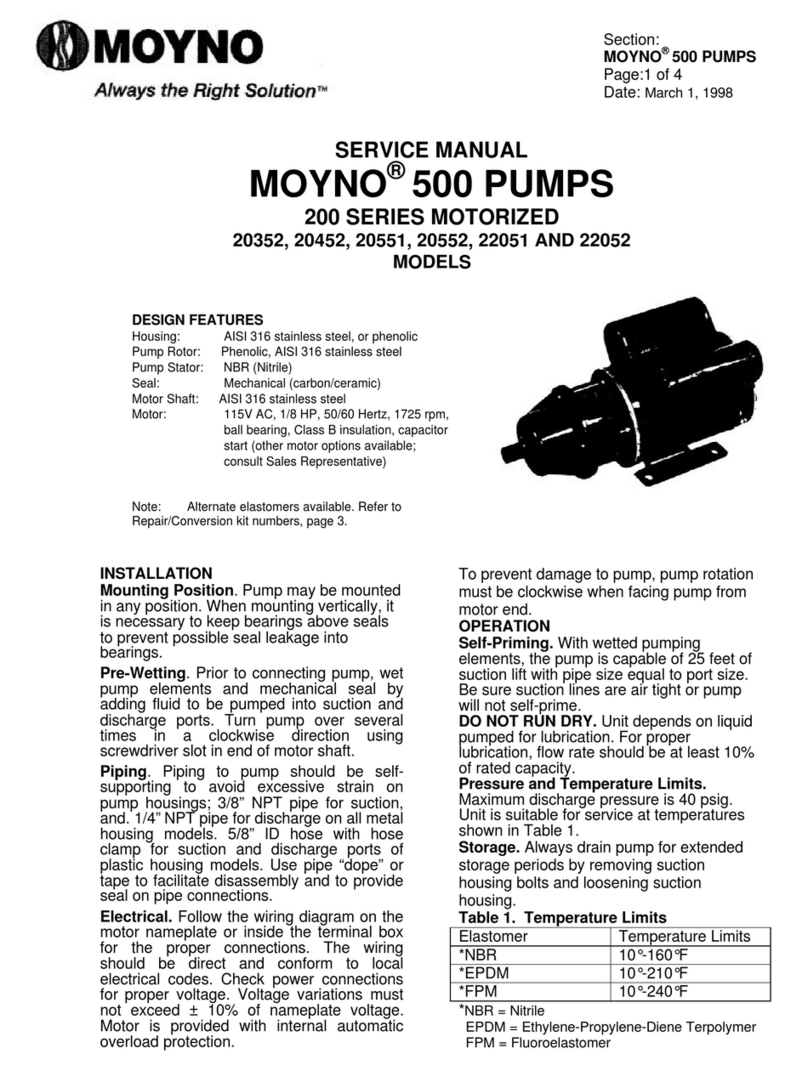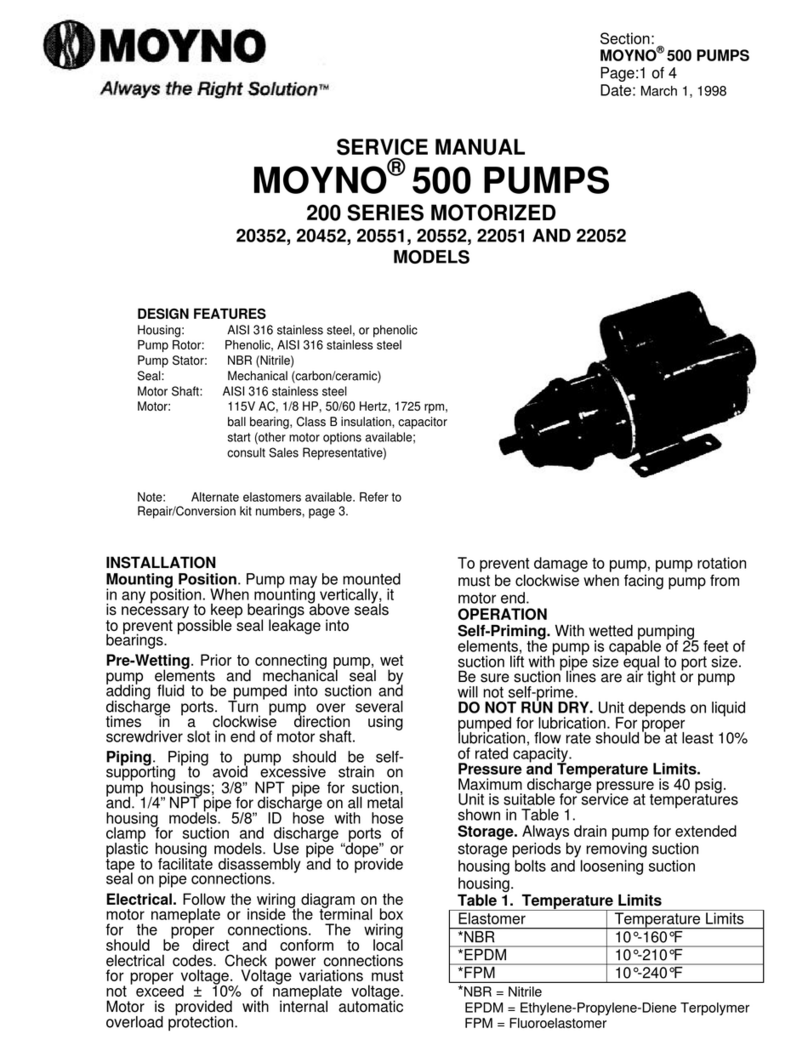TROUBLESHOOTING
WARNING: Before making adjustments, disconnect
power source and thoroughly bleed pres-
sure from system prior to disassembly.
Failure to do so could lead to electric
shock or serious bodily harm.
Failure To Pump.
1. Motor will not start: Check the power supply. Voltage
must be +10% of nameplate rating when the motor
is in locked rotor condition. Check for faulty capacitor on
1-phase models.
2.Motor runs and thermally kicks out:Check for excessive
discharge pressure. Check for defective centrifugal switch
on 1-phase models. Increase ventilation to motor. Do not
use less than #14 wire size.
3. Stator torn; possible excessive pressure: Replace
stator; check pressure at discharge port.
4. Flexible joint broken; possible excessive pressure:
Replace joint, check pressure at the discharge port.
5.Wrong rotation (3-phase only): Rotation must be clock-
wise when facing pump from motor end. Reverse the con-
nections of any two line leads to the motor.
6. Excessive suction lift or vacuum.
Pump Overloads.
1. Excessive discharge pressure: Check pressure at
discharge port for maximum ratings given in Table 1.
2. Fluid viscosity too high: Limit fluid viscosity to 100 CP
or 500 SSU.
Noisy Operation.
1. Excessive suction lift or vacuum: Maximum suction
lift is 25 feet for water.
2. Suction line too small: Check pipe size. Be sure lines
are free from obstructions.
3. Pump cavitates: Pump speed is 1725 rpm. Viscosity
of fluid should not exceed 100 CP or 500 SSU.
4.Flexible joint worn: Replace joint.Check pressure at the
discharge port.
5. Insufficient mounting: Mount securely to a firm
base. Vibration induced noise can be reduced by using
mount pads.
Seal Leakage.
1. Leakage at startup: If leakage is slight, allow pump to
run several hours to let faces run in.
2. Persistent seal leakage: Faces may be cracked from
freezing or thermal shock. Replace the seal.
Pump Will Not Prime.
1. Air leak on suction side: Check pipe connections.
PUMP DISASSEMBLY
WARNING: Before disassembling pump, disconnect
power source and thoroughly bleed
pressure from system. Failure to do so
could result in electric shock or serious
bodily harm.
1. Remove suction and discharge piping.
2.Remove clamp (112) holding suction housing (2) to dis-
charge housing (1).Remove suction housing (2) and stator (21).
3. Remove rotor (22) from flexible joint (24) by turning
counterclockwise (RH thread).
4. Flexible joint (24) can be removed from motor shaft
by using a 3/16 Allen wrench in end of joint and turning
counterclockwise. Sanitary joints can be further dis-
assembled by removing the snap rings, allowing the pins
to be removed.
5. Slide mechanical seal (69) off motor shaft.
6.Remove discharge housing (1) from adapter flange (12)
by removing screws (112B).
7. Carefully pry seal out of discharge housing (1). If any
parts of mechanical seal are worn or broken, the complete
seal assembly should be replaced. Seal components are
matched parts and are not interchangeable.
8. Remove adapter flange (12) from motor (70) by remov-
ing screws (112A).
9. Remove slinger ring (77).
PUMP ASSEMBLY
1. Install slinger ring (77).
2. Attach adapter flange (12) to motor housing using
screws (112A).
3. Attach discharge housing (1) to adapter flange (12)
using screws (112B). Be sure to center seal bore on shaft.
4. Install mechanical seal (69) in discharge housing (1)
using the following procedure:
a. Clean and lubricate sealing faces using clean
vegetable oil (not grease).
Caution: Do not use oil on EPDM parts. Substitute
glycerin,soap and water, or approved lubricate.
b. Lubricate outer surfaces of the seal seat, and push
assembly over the motor shaft and into the discharge
housing (1) seating it firmly and squarely.
c. After cleaning and lubricating the shaft, slide the
seal body along the motor shaft until it meets the seal seat.
d. Install seal spring and spring retainer on shaft.
5. Assemble sanitary joint by sliding center section
between two ends. Insert pins and retain with snap rings.
Thread flexible joint (24) into motor shaft in a clockwise
direction (RH thread).Tighten with 3/16 Allen wrench.
Page 2























